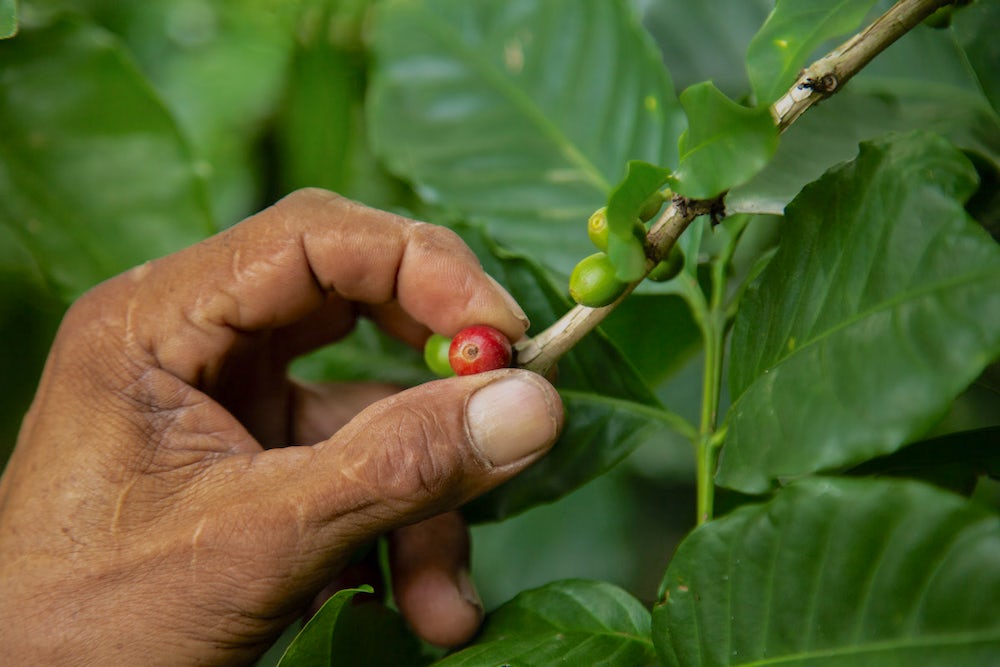
For many, a bitter but fortifying cup of coffee is a morning staple. But the journey from farm to roaster to coffee shop is one beset by inequality, and coffee farmers worldwide subsist in poverty. 12.5 million farming families prop up the global coffee industry, yet for every $5 latte purchased, a coffee farmer earns just two cents.
It’s a stark disparity perpetuated by systemically low prices for the producers of one of the world’s most traded agricultural commodities.

With a new approach to pricing, Heifer International is working to tackle this enduring crisis. Alongside specialty coffee importer Sustainable Harvest and Bellwether Coffee, creator of the most sustainable commercial coffee roaster, Heifer developed a pricing methodology called Verified Living Income (VLI).
Verified Living Income determines the minimum fair price for coffee given the production realities for coffee farmers. Driven by data, the initiative is designed to pave a path toward a transparent, economically viable future for smallholder coffee producers.
“It’s not enough to pay more than the market or more in comparison to another company,” said Cory Gilman, Heifer’s strategic initiatives manager for coffee and commodities. “And it’s not a sustainable, ethical, fair price unless it allows farmers to earn enough so they can provide for their families, invest in their farms and live with dignity.”
"So much of our supply chains are subsidized by poverty on the producing end and by climate externalities. There’s a systems-wide change that needs to take place, and I would love for coffee to be a beacon of light on how to do that." — Monica Terveer, Sustainable Harvest
The model is the product of a yearlong collaboration between Gilman, Grayson Caldwell, senior sustainability manager for Bellwether Coffee, and Monica Terveer, director of sales for Sustainable Harvest. In a recent live chat with Heifer International CEO Pierre Ferrari, VLI’s creators discussed its potential for transforming an industry plagued by poverty.

Verified Living Income is calculated using data collected from coffee farmers in several categories, Gilman said. These include:
What’s key here is that there’s no singular set price for VLI, Gilman stressed. The model is adaptable by design, able to calculate the fair price in different contexts given the changeable production realities for coffee farmers.
“It’s going to shift depending on who we’re working with — and that’s the point,” she said.
The coffee industry has done a real disservice to its consumers, said Caldwell, with most companies touting ethical or fair pricing without sufficient data to substantiate the claims. It’s an industry-wide problem that Caldwell understands firsthand.
“When I started at Bellwether, we had the same sustainability claims that every coffee company had,” Caldwell said. It wasn’t until Bellwether, Heifer and Sustainable Harvest conducted the Verified Living Income pilot — collecting data in Colombia on 38 smallholder farmers from the ASOPEP cooperative — that they had concrete figures to determine what a fair price actually meant.

For real change on behalf of coffee farming families, Caldwell thinks the industry needs to take a step back and lay out the issue again. Other pricing methodologies haven’t solved the problem, she said. “That’s why we’re still here, that’s why coffee farmers still aren’t being paid a fair price.”
As smallholder coffee farmers weather a steady drumbeat of volatility — from pests to market fluctuations to climate change — droves of producers are leaving the coffee sector altogether, seeking more viable work elsewhere. Paying fair prices is paramount, Terveer stressed, not just for individual coffee companies, but for the continued existence of the coffee industry as a whole.
“So much of our supply chains are subsidized by poverty on the producing end and by climate externalities,” Terveer said. “There’s a systems-wide change that needs to take place, and I would love for coffee to be a beacon of light on how to do that.”
For more on the Verified Living Income benchmark, check out the full whitepaper.